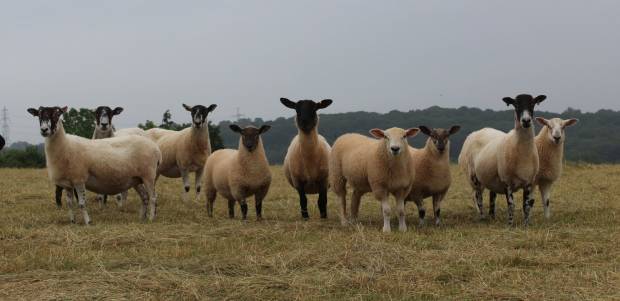Sheep breed survey shows innovation as well as opportunities
18th August 2021
The National Sheep Association (NSA) values the work that has gone into the latest Sheep Breed Survey and recognises how the UK’s sheep genetics, and the systems behind them, are continuing to adapt in response to ever changing demands being placed on the industry.
Run for the fifth time since 1971, the survey conducted by AHDB/Signet Breeding with funding from the UK levy boards and support from British Wool, gives an insight into more than just changing breed numbers but creates a picture of how the UK sheep industry is structured, the part that stratification is playing, as well as providing an analysis of likely future breeding and genetic strategies.
The survey suggests an ongoing movement away from the traditional breeds associated with stratification towards more closed flocks in the lowlands and the increased use of the terminal and composite sire-based crosses to influence maternal lines.
NSA Chief Executive Phil Stocker says: “First and foremost this work suggests to me that sheep farmers are increasingly taking an interest and an ownership of the genetics within their flocks. That in itself is a really positive finding given that genetic selection is one of the key foundations of a successful sheep farming business. It is no surprise we are seeing a continued gradual move away from the traditional stratified sheep breeding system, although the percentage of sheep involved in this long-established approach is still over 50%, and this is driven in part by lowland flocks wanting to closed flocks and be in control of genetics and health status.
“But we also know that the effects of all this are driving quality and innovation and some of the crossbred sheep societies and their members are active in fighting back to make sure they deliver what buyers want – whether that is health assurance or performance figures. Purebred ewe mating’s may have decreased but purebreds are still in high demand and without them crossbreds aren’t possible. There is no doubt a strong case can be made for stratification, and increasingly there is no reason why this cannot be done more within closed flock principles. If what we are seeing is an improvement in quality and productivity, then that has to be welcomed. At the other end of the breed spectrum it is interesting to see a breed like the Herdwick seeing some growth – again showing that hill farmers are finding ways to innovate and stimulate demand through targeted involvement in environmental schemes and developing specialist meat products.”
The report goes on to state that use of Estimated Breed Values (EBVs) for rams has seen a small increase in the higher value sections of the national flock, but overall use is not widespread. Mr Stocker continues: “On one hand you can argue we shouldn’t worry about this – if you think of our breeding flock as a pyramid if those at the top are increasingly using EBVs then improved genetics will filter down and improve sheep quality more widely. But we also know more could be done here with both terminal and maternal EBVs – of course a sheep needs to look right but the AHDB Ram Compare project has given more evidence to variations in performance across individuals”.
Mr Stocker concludes: “All of farming is facing huge change and sheep farming is no different. This work is hugely valuable in tracking the structure of our industry and NSA will be using it in our work to ensure a successful sheep industry for the future. It’s encouraging to see the innovation and ownership of sheep breeds and genetics, right down to an individual farm level and I’m convinced that, with such an extensive sector that is linked closely to our landscape and environment, we can have the best of all worlds – a high level of breed and genetic diversity as well as efficient sheep”.
To read the full survey report, please click here.





